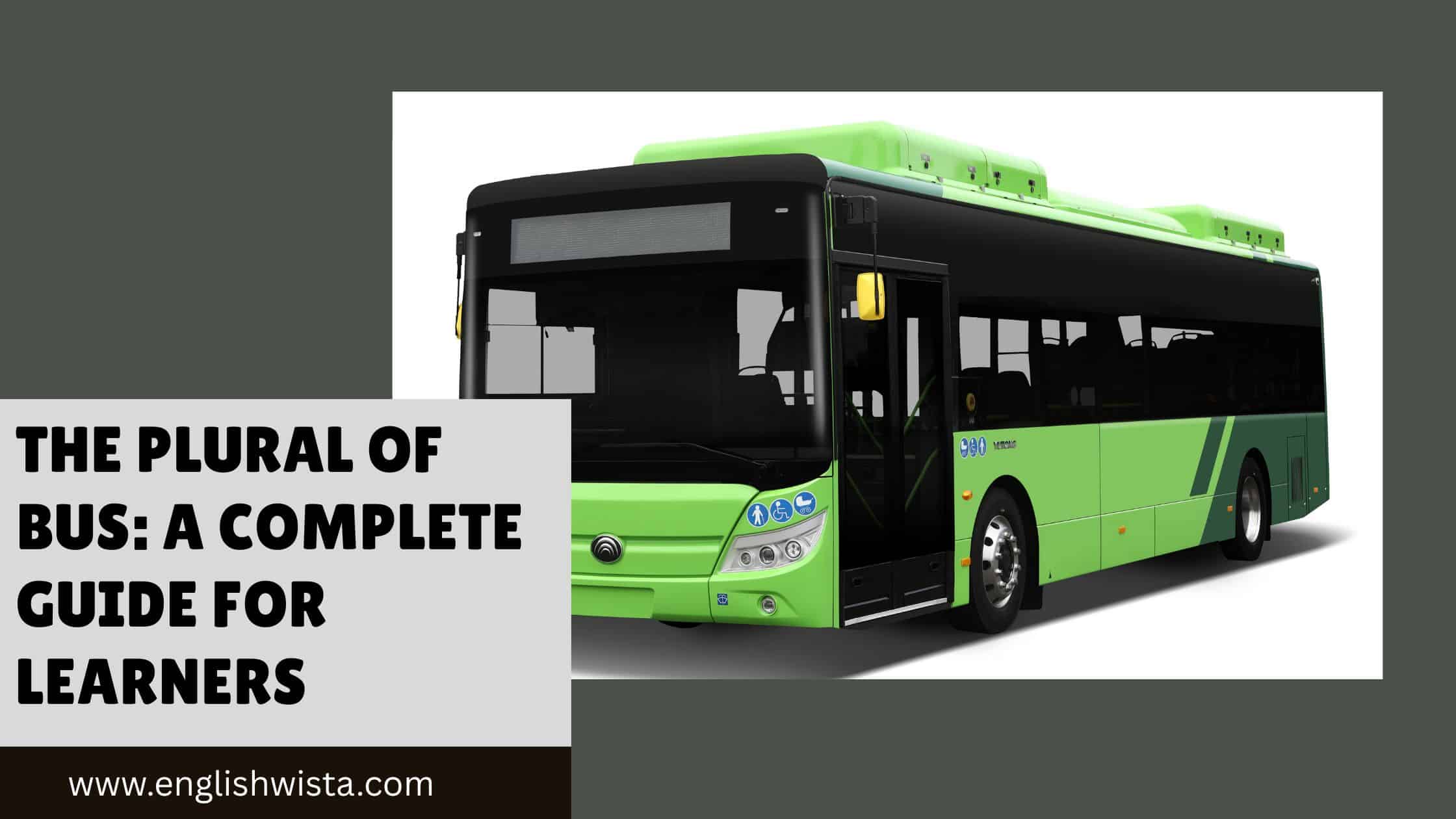Have you ever stood at a bus stop, looked around, and wondered, “What’s the plural of bus? Is it buses or busses?” You’re not alone! English can sometimes feel tricky, especially with words that don’t follow simple patterns. But don’t worry we’re going to break this down step by step in a friendly and easy-to-follow way.
By the end of this guide, you’ll know exactly how to use the plural of bus correctly, why it’s spelled the way it is, and you’ll even see fun examples to help the word stick in your memory. So, let’s take a ride together and learn about bus and its plural form!
What Is the Plural of Bus?
The simple answer: the plural of bus is buses.
Yes, that’s it! Most of the time, when you want to talk about more than one bus, you just add -es at the end:
- 1 bus → 2 buses
- The bus is late → The buses are late
Pretty straightforward, right? But then why do some people also write busses? Let’s dig a little deeper.
Why Do We Add “-es” Instead of Just “-s”?
Here’s where English spelling rules come in. When a word ends with s, sh, ch, x, or z, we usually add -es to make it plural.
For example:
- class → classes
- box → boxes
- brush → brushes
Since bus ends with an “s” sound, it follows the same rule: bus → buses.
This rule makes the word easier to say. Imagine if we just added “s” and got buss. That would look strange and be hard to pronounce. Adding “-es” solves the problem and keeps the word clear.
But What About “Busses”?
Here’s where confusion often happens. You may see the word busses sometimes, but it doesn’t usually mean more than one bus.
- Busses can actually mean something else: it’s an old-fashioned or alternative spelling of the word kisses or caresses.
- For example, “She gave him many busses on the cheek.”
In modern English, we almost never use busses for this meaning anymore. Today, buses is the standard plural of bus.
So if you’re talking about vehicles, always stick with buses.
Is Bus Singular or Plural?
This one’s simple: bus is singular and buses is plural.
- Singular: “The bus is waiting at the stop.”
- Plural: “Three buses are waiting at the stop.”
Think of it just like other words:
- cat → cats
- dog → dogs
- bus → buses
Easy, right?
Where Does the Word “Bus” Come From?
Let’s pause for a fun fact! Did you know that bus is actually short for a longer word?
The word comes from omnibus, a Latin word that means “for everyone.” In the 19th century, when large vehicles were first used to carry many passengers, they were called “omnibuses.” Over time, people shortened it to just “bus.”
So when you step onto a bus, you’re literally stepping onto a vehicle meant “for everyone.”
Examples of Bus and Buses in Sentences
To really understand the plural of bus, let’s look at some practical examples. These sentences show how you might use the word in everyday conversation.
- “The school bus picks up children every morning.” (singular)
- “Two school buses were waiting outside the school.” (plural)
- “I missed the last bus home last night.” (singular)
- “During the strike, all city buses stopped running.” (plural)
- “That red bus looks brand new.” (singular)
- “Tourists filled the double-decker buses in London.” (plural)
Notice how natural buses sounds in each plural example.
Comparing Bus With Other Similar Words
To make things even clearer, let’s compare bus with a few other words that follow the same pattern:
- Glass → glasses
- Dress → dresses
- Guess → guesses
Just like these words, bus needs that extra “e” before the “s” when we make it plural.
Now imagine if you said glasses as glasss that would look and sound odd. The same logic applies to bus.
Common Mistakes People Make
Let’s clear up some common errors so you don’t fall into the trap:
- Using “busses” instead of “buses.”
- Wrong: “The busses are late today.”
- Correct: “The buses are late today.”
- Forgetting the “e.”
- Wrong: “Three buss came to the station.”
- Correct: “Three buses came to the station.”
- Confusing singular and plural.
- Wrong: “The buses is full.”
- Correct: “The buses are full.”
Fun Facts About Buses
Learning can be even more fun when we add some interesting details! Here are a few fun facts about buses:
- The longest bus in the world is more than 30 meters long and can carry over 250 passengers.
- London’s red double-decker buses are one of the most famous icons of public transport.
- School buses in the United States are almost always yellow, making them easy to spot.
- The word busboy (a person who clears tables in a restaurant) also comes from the same root word, even though it has nothing to do with vehicles!
Quick Recap of Key Points
Let’s review everything we’ve learned in a quick and simple way:
- The plural of bus is buses.
- We add -es instead of just -s because the word ends in “s.”
- Busses is mostly an outdated word meaning “kisses,” not the plural of bus.
- Bus is singular, buses is plural.
- The word bus comes from omnibus, which means “for everyone.”
- Use buses in all modern writing and speech when talking about vehicles.
Conclusion
So now you know the plural of bus is buses, not busses. The rule is simple, the usage is clear, and with the examples we went through, you’ll never have to doubt yourself again.
Next time you’re at a station or stuck in traffic, you might even smile when you see more than one bus and think, “Ah yes, those are buses!”
Language learning doesn’t have to feel heavy or complicated. Sometimes it’s just about slowing down, asking simple questions, and taking the time to notice patterns. And now, you’ve got this one completely figured out.



